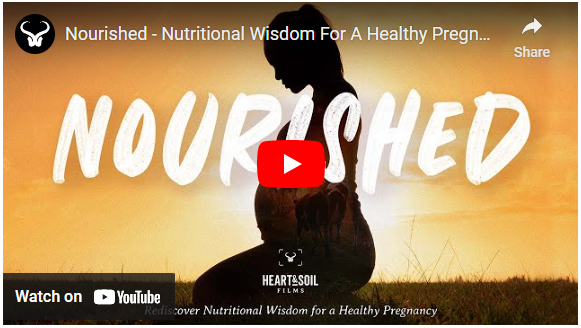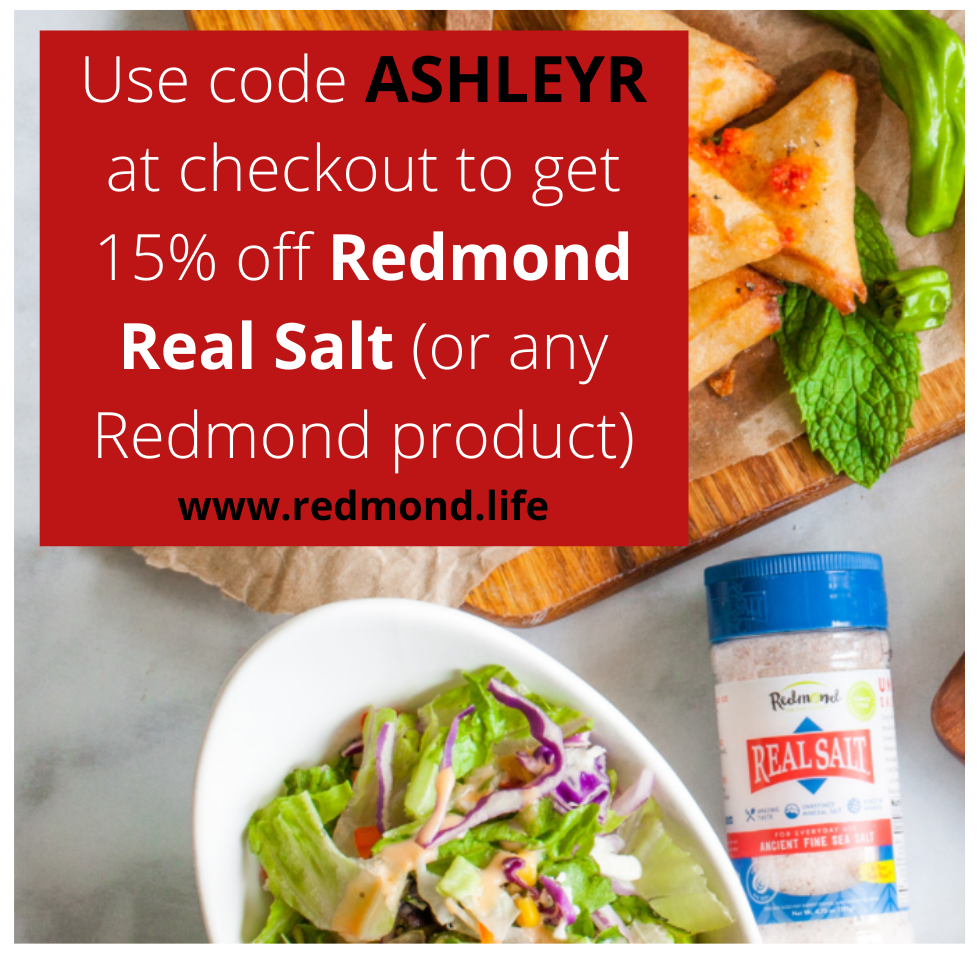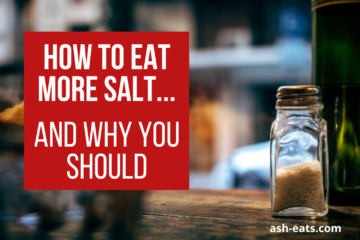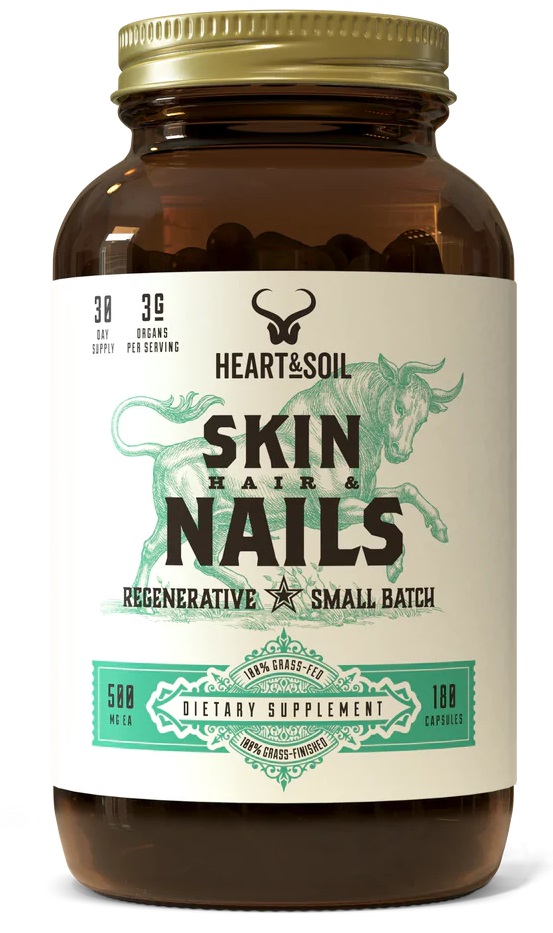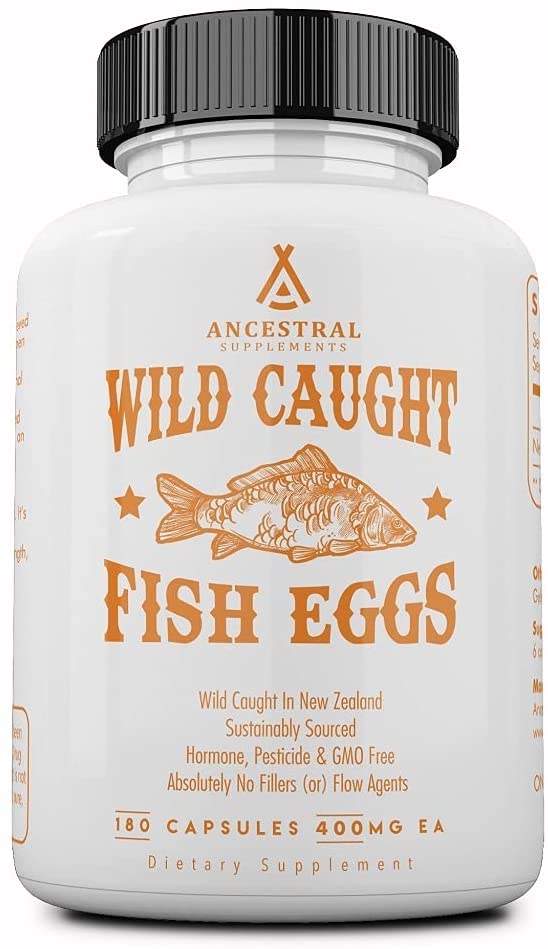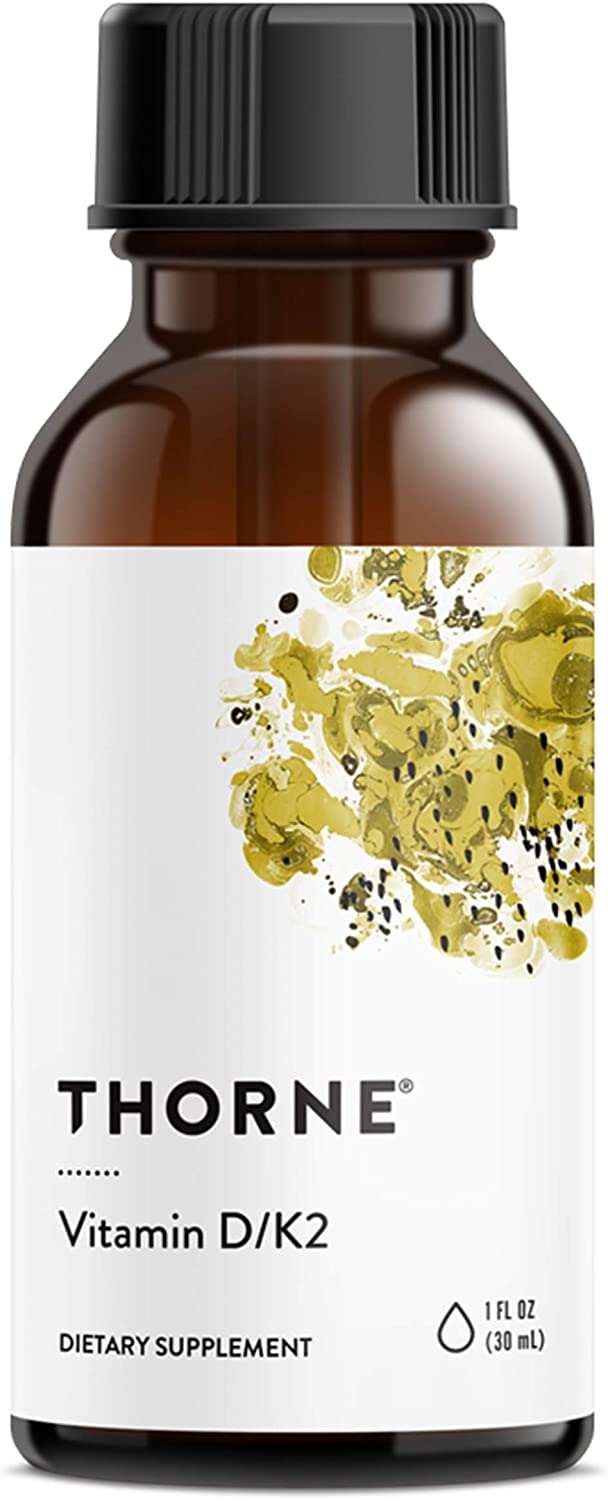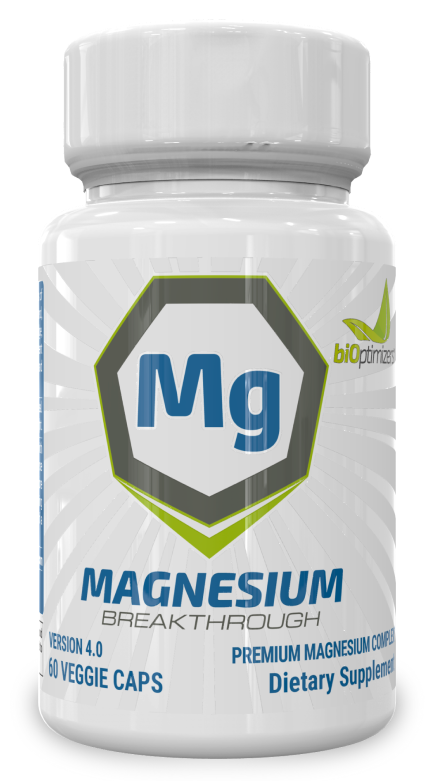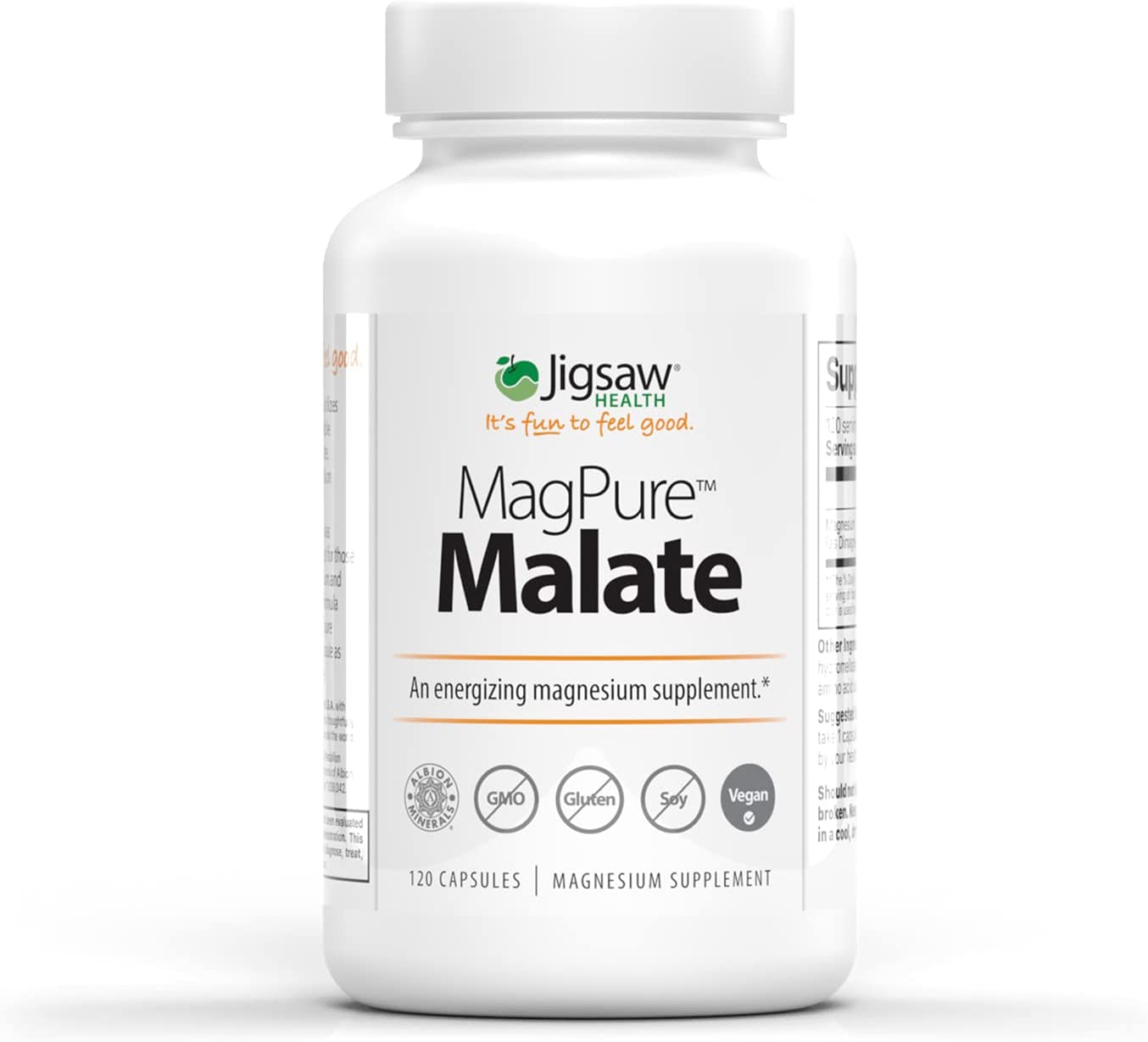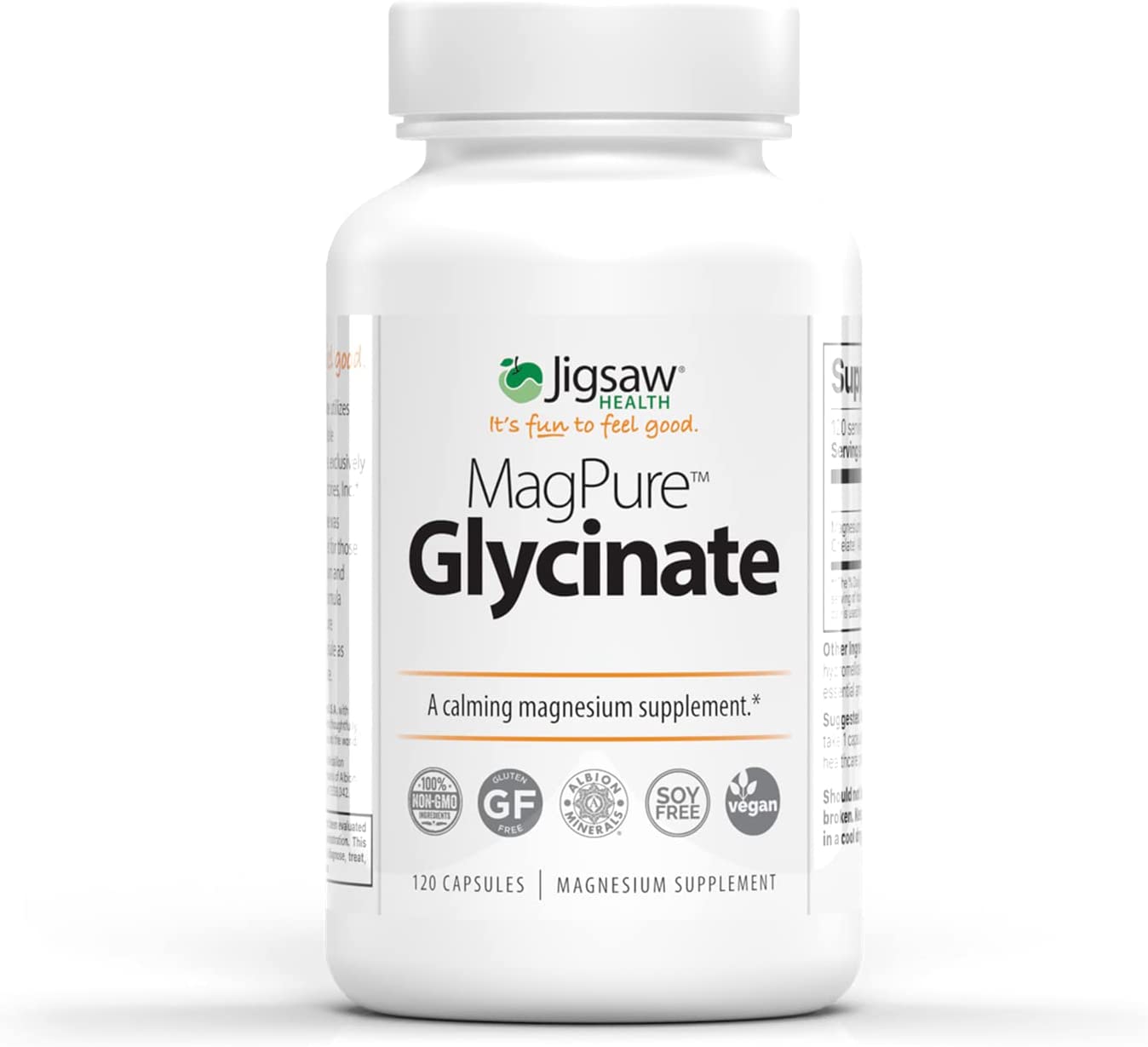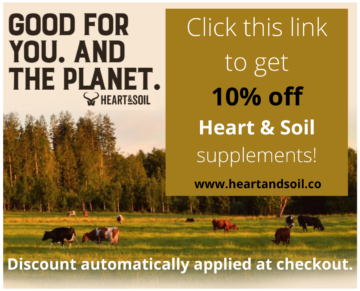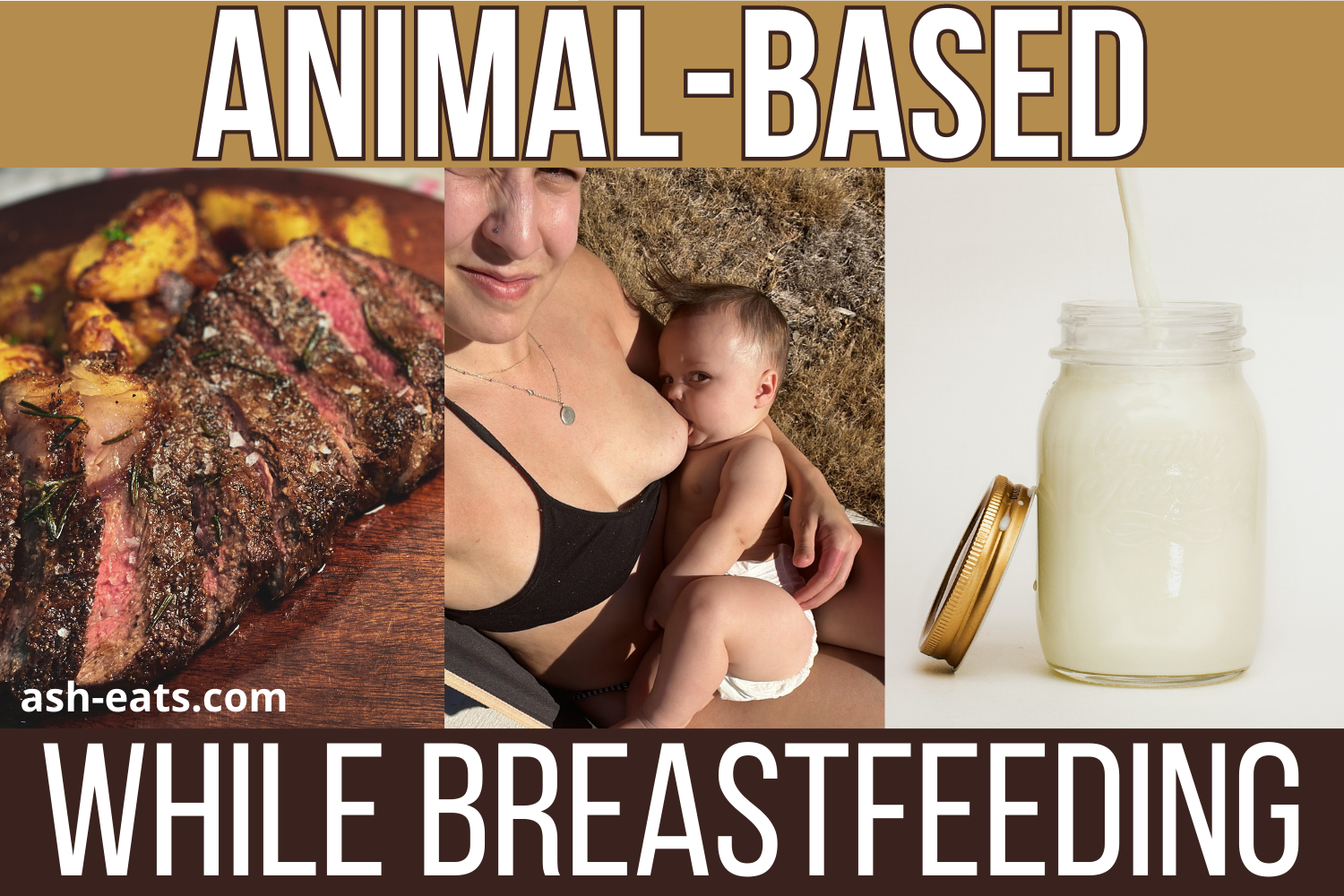
Published on January 4, 2023 by Ashley Rothstein animal based diet while breastfeeding
Hey mama! I often get asked how I eat to keep my milk supply up.
Women approach me concerned about their milk supply, wondering if they need to eat more, change something, or what they should do.
My daughter is 7.5 months old, and while I do not numerically track my milk supply (I’ve never pumped), I have never had a reason to doubt its abundance.
Farrah (my daughter) has grown like a weed since birth, has a great latch, is content after feeds, and overall, is a plump, vibrant, happy, and nourished baby.
When she was young, it also seemed that I had an oversupply. My letdown was harsh, Farrah would choke on my milk, my boobs would fill often, stiffen up and leak, and she sounded like a little pump while eating (and still does). To put it simply…based on all I’ve observed around our nursing journey, my intuition just tells me I’ve always had a ton of milk.
I owe a large part of my (assumed) plentiful and nutrient-dense breast milk to three core things:
- my animal-based diet
- eating with zero restriction
- paying attention to how I feel and making adjustments
In this blog post, I share what I eat on a typical day (since I get requests for this a lot) and unpack how I analyze my diet, energy, and habits to make sure I’m on track to sustain my milk supply. animal based diet while breastfeeding
For more animal-based pregnancy, birth, postpartum, and motherhood resources, check out the pregnancy section on my website. y animal based diet while breastfeeding
Heart & Soil Films featured our story in their mini-documentary, Nourished, which spotlights animal-based pregnancies. Click on the above image to watch it on YouTube.
How much to eat?
I’ve read so many things about how much nursing women “should” eat.
- 350-500 calories more than you normally do
- 500 more calories than you ate while pregnant
- 2200-2500 calories per day
- 2000-2800 calories per day
- At least 1800 calories per day
- 1-2 extra snacks per day
- Eat “slightly more” of the same foods you would normally eat
And not just how much they should eat, but what they should eat.
Eat at least 5 portions of fruits and vegetables per day. Make half your plate fruits and vegetables. Drink at least 16 cups of water. Drink at least 10 cups of fluids. Make at least half your grains whole grains. Add a whole grain to every meal. Move to low-fat or fat-free milk, yogurt, or cheese. Eat lots of healthy fats. Minimize fatty meats. Eat lean meats. Eat dairy. Don’t eat dairy.
How is anyone supposed to know what to do?
Conventional one-size-fits-all recommendations often cloud intuition.
It can be good to have guidance or a template to work from, but if someone is telling me what to do, I am more likely to box myself into that instruction and leave no room for adjustment. This blinds me to my body’s signals, the narrative “this is what I should be doing” guides me, and if something feels off, there is less of a drive to intervene and make a change. Why would I need to change anything if the recommendation I’m following is “right”?
I felt confident in my diet during pregnancy, so when it comes to breastfeeding, instead of following conventional recommendations, I eat intuitively and prioritize three things:
- nutrient-dense foods,
- eating with zero restriction (following my hunger), and
- making lifestyle adjustments to regain hunger if I lose touch with it.
Nutrient-dense foods
Vitamins and minerals (nutrients) are what humans need to sustain life and live optimally.
Foods that are nutrient-dense have the most vitamins and minerals bioavailable to humans.
As humans, we only have so much room in our stomachs for food and we can only eat so often.
If you are breastfeeding, you not only require nutrients to sustain yourself, but extra nutrients to make breast milk to sustain your baby.
So whenever you eat something, it makes sense to eat foods that have the highest amount of nutrients available to you. You’ve probably heard the phrase “the best bang for your buck.” It applies here.
Below is an example to paint the picture…
Say you only have room for a palm-sized portion of food. If your goal is to eat as many nutrients as possible, what would be more efficient to eat – a palm-sized piece of bread, or a palm-sized piece of steak?
So my first rule, whenever I eat something, is to grab nutrient-dense foods first: beef, organs, egg yolks, raw dairy, animal fats, and fruits.
Eating with zero restriction
When I say “zero restriction,” I should clarify something first…
My diet is unwavering. I cook all of my meals at home and do not deviate away from the foods I eat: beef, organs, raw dairy, egg yolks, animal fats, berries, bananas, squash, maple syrup, honey, and the occasional vegetable, herb, spice, or odd sweet fruit. I do this by choice because I feel so great doing it. So when I say I eat with “zero restriction,” I eat the foods I choose to eat, in abundance.
Some days I eat three bananas. Some days I eat an entire batch of my raw milk ice cream. Some days I eat over 8 oz of raw cheese. Whatever I want, I go for it. And to my surprise, not only have I not gained weight, but I am starting to lean out (I am 7.5 months postpartum now) without changing anything.
I hear more and more about how restricting intake leads to weight/fat/water retention, and I don’t doubt it to be true. The more I fuel my body and give it what it needs to run properly, the lighter I seem to feel and the less stressed I appear to be. Everything just flows and works better.
I used to heavily restrict my food intake to achieve aesthetic goals. When I look back on that time, I was severely undernourished. My body felt inflamed, heavy, and like it was under a lot of stress.
So even though it can be a scary thought, I think many women would actually benefit from eating much more, not less. I think this is true even without the added factor of breastfeeding, but especially so, if breastfeeding.
Lack of hunger
The more hungry I am, the more I eat, and the more I eat, the better I seem to feel.
But there are times I lose my hunger.
This usually happens during periods of high stress and when I am not managing myself properly. Lack of hunger could be a sign that your body is running on stress hormones.
If I am not hungry, I don’t eat as much. The lower food intake puts extra stress on my body, further suppresses my appetite, and deeper down the hole I go.
If I lose my hunger, I know something is off and that I need to reconnect with it somehow.
When I catch myself in a phase where I am not particularly hungry, I ask myself:
- am I working a lot?
- am I indoors a lot?
- am I properly hydrating?
- am I on screens/social media a lot?
- am I sleeping well? (check out my Instagram “EMF” highlight!)
- am I asking for help?
- am I connecting with others?
- am I moving my body?
- do I need a good cry?
- do I need music?
- do I need nature?
- do I need a change of scenery?
- do I need to do something fun or creative?
For me, high stress almost always correlates with not hydrating properly or enough, lots of time indoors, not getting enough sun, working a lot, high screen time, not connecting with others much, not moving my body much, and just forcing myself through the motions of the day.
When I can catch myself in these subpar behaviors and make a change (or changes) to wherever I am lacking, my stress levels decrease, my hunger comes back, and I feel well again.
During critical periods like pregnancy and breastfeeding, it is important to stay connected to your hunger. Your hunger is your guide to fueling yourself and your baby.
Note for women new to an animal-based diet:
Prior to getting pregnant, I had been doing an animal-based diet for about 6 months. Before that, I toggled between paleo, carnivore, and keto for a few years. Going into pregnancy (and now breastfeeding), I felt connected to my body, like I had a solid understanding of health, and was well-adjusted to this WOE.
If you are new to this WOE and eating intuitively sounds overwhelming to you, I understand. It takes years/decades/lifetimes to connect with yourself.
If having a template to work from sounds better to you, start with the below resources:
A Simple Guide for Animal-Based Eating
Weston A. Price Diet for Pregnant and Nursing Mothers
animal based diet while breastfeeding
How to tell if you’re undereating
So, you’re eating what seems like a lot…but is it enough?
I will never forget what my midwife told me at one of my postpartum appointments.
“If you’re feeling a bit emotional, you probably need to eat something.”
For some reason, that statement stuck with me like glue.
So far, my emotions have felt balanced postpartum, but I occasionally feel some dark emotions creeping in.
Thanks to my midwife, as soon as I feel them coming on, I use them as my cue to fuel up. And low and behold, as soon as I give my body food, my emotions regulate almost instantly.
I began to apply the concept to other unpleasant symptoms I felt…low energy, brain fog, trouble sleeping, etc.
And I noticed that adequate fuel (and hydration) seemed to regulate whatever was going on.
It made me wonder if things like postpartum depression/anxiety, “mom brain,” or similar conditions are related to women being undernourished.
In my blog post about the first trimester of pregnancy, I talk about “staying ahead of yourself.” The same concept applies to breastfeeding.
When I feel myself heading toward feeling unwell (this can be either physical or mental), I zoom out, analyze myself from a bird’s eye view, and notice that I have been undereating for a few days.
If something takes a few days to do, it often takes a few days to undo. So once I notice the undereating, it usually takes a few days of proper eating to bring me back up to baseline.
Also…
Undereating is not the only enemy. Sometimes I eat a lot, but not the right things. For example, I used to put down an entire batch of my raw milk ice cream in one sitting. I felt fine doing this once, but sometimes I did it multiple days in a row.
A few days into doing that, I noticed myself not feeling as well. animal based diet while breastfeeding
So I learned that I not only needed to catch myself during periods of undereating (and underhydration), but also during periods of eating too many less-than-optimal foods.
Remember the bread vs. steak example above? If you only have so much room to fill, make it count.
So if you’re trying to figure out if you’re eating enough to meet your body’s nutrient demands, use your emotions and energy as a guide. If something feels off, try eating more nutrient-dense foods that you know serve you well and see if that helps. Ianimal based diet while breastfeeding
What I eat on a typical day
I get asked to do “what I eat in a day” videos/posts.
I’m hesitant to do them because I feel like it takes away from the core of what I believe in, which is eating intuitively.
However, there is value in having a template or example to work from, and it takes a long time to build a connection with your body to be able to eat intuitively.
So, for those who find it useful, here is an example of what I eat on a typical day.
Important note: I actually had to up my intake even more (beyond what I shared below) to get my cycle back. If you’d like to read about my experience with that, check out this post.
My diet while breastfeeding looks pretty similar to my diet while pregnant, however, I think I eat more now.
One, because it’s much easier to eat without a growing baby taking up room in your abdomen, and two, even though I had a great pregnancy, I just feel better overall now than I did while pregnant.
On days I’m feeling good, I’m usually hungry upon waking.
Before eating, I drink a glass of salted water, usually 16-32 oz. My salt-to-water ratio is 1 tsp of salt in 32 oz of water. I use this same ratio for all water I drink throughout the rest of the day, too.
(If you and your family also eat/drink a lot of salt, check out this post here to learn how we buy salt to save the most money.)
To start the day, I usually grab something small, like a carnivore bar (ASHLEYR for 10% off), a glass of raw milk, or raw cheese and leftover steak.


For my first large meal, I usually make a spread that looks like a charcuterie board. For example, a banana, blueberries, raw cheese, steak or ground beef patties. I generally stick to the same fruits (berries and bananas) but occasionally throw some new ones in the rotation. With that meal, I take organ supplements (ASH10 for 10% off – I usually take ‘Warrior’), oyster supplements (ASHLEYR for 10% off), and wild-caught fish eggs. I also sometimes take acerola cherries (ASHLEYR for 10% off), lion’s mane mushrooms, and turkey tail mushrooms.
Note: If you’re looking for an organ supplement source that is cheaper than Heart & Soil but still high quality, consider Perfect Supplements. They offer a multi-organ blend and a desiccated liver supplement. You won’t get the targeted support that you do with Heart & Soil, but these are great alternatives. Perfect Supplements also offers both products in bulk powders. Use ASHLEYR for 10% off at checkout.


In the afternoon, I’ll have a snack platter. This may be an Opal apple, raw cheese, and a bag of beef + beef liver bites.

I also sometimes have propolis and/or bee pollen with my afternoon snack (for the immune benefits).
Then right before dinner (or as I’m cooking), I’ll have another snack. This may be a glass of raw milk, a banana, and/or Carnivore Crisps (ASHLEYR for 10% off) with raw cheese. animal based diet while breastfeeding

Dinner is another large meal, which may look like ground beef, pan-fried kabocha squash, banana, and egg yolks.

Or banana + sweet potato patties pan-fried in ghee, topped with smash burgers, over-easy eggs, and raw cheese or a light drizzle of maple syrup.

Or ground beef, homemade guac (avocado + lime + lemon + cilantro + sea salt), pan-fried kabocha squash, cilantro, egg yolks, and raw sour cream.

Or ground beef, pan-fried kabocha squash, onions sauteed in ghee, raw sour cream, raw cheese, dill, and fresh lemon/lime juice.
 I also take 2 magnesium capsules with my evening meal.
I also take 2 magnesium capsules with my evening meal.
As for how much I eat, I don’t measure anything. Instead, I choose the portion for each food based on what looks good to me at the time.
I also do my best to follow intermittent fasting as I feel the best doing so. This usually means not eating a few hours before bed.
If I’ve eaten enough food throughout the day, I feel fine doing this. But if I’ve undereaten that day, I may feel ravenous in the evening (which is usually a cue that I have undereaten that day). This can disrupt my sleep. And if it goes on for a few days, that’s when I start to feel my appetite suppressed. I won’t be hungry, but I’ll feel super wired. Sort of like a “keto feeling” for those who know what I mean by that.
If you have read my other blog posts, I probably sound like a broken record when it comes to salt at this point, but equally important to fueling myself with nutrient-dense food is hydrating properly with a ton of salted water. If you’d like to learn more, read about my experience with salt here.
And if you’re looking for meal ideas, follow me on Instagram. I post my meals on stories every day and many of my snacks. I have a bunch of story highlights saved with my meals as well.
Side note…
I don’t usually advocate counting calories. For me, it doesn’t work and brings me a lot of stress. But for some women, it does work. You have to be honest with yourself. Your body needs a lot of food while breastfeeding. If you’re trying to eat intuitively and you zoom out, analyze your diet, and it doesn’t feel like you’re eating a lot (or if you’re feeling undernourished), tracking your food for a while may be a good idea. And if you had to shoot for a number, I’d say around 2500 calories is a good place to start. Maybe less, but shoot high in the beginning and see where that goes.
For reference, below is a message I sent to a woman who was trying to meet a 2600-calorie goal.
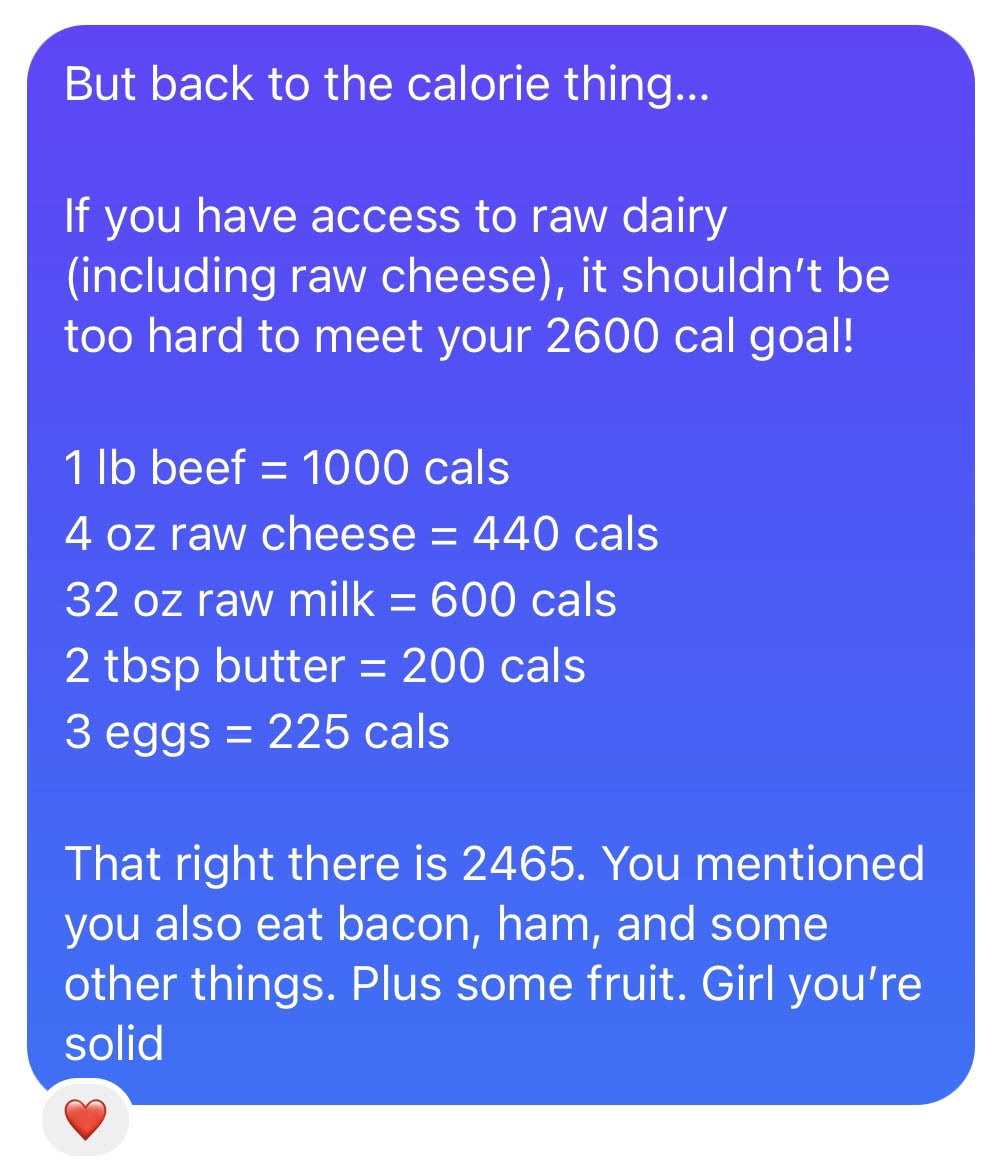
I eat more than the above-listed amounts most days, so I’m definitely around (if not higher than) the above-mentioned calorie level. And because I know that and don’t feel undernourished, I feel comfortable with eating intuitively.
I’m obsessed with salt.
Find out why here.
Supplements I take
You may have seen my blog posts on the supplements I took before pregnant and while pregnant. I linked them below in case you haven’t seen them and want to.
- Manufactured vs. Real Food Supplements: What’s The Difference & Why You Should Care
- Ancestral Supplements vs. Heart & Soil Supplements: How To Choose?
- Our Fertility Journey: Conceiving on an Animal-Based Diet
- Getting Through the First Trimester on an Animal-Based Diet
- Animal-Based Pregnancy: What I Ate, Took & Did to Fuel Me and My Baby
My supplement regimen hasn’t changed much. animal based diet while breastfeeding
These days, I take:
George St Pierre’s Warrior
(beef liver + heart: rich in vitamin A, copper, choline, folate, B6, B12, niacin, iron, potassium, phosphorus, COQ10, zinc, and selenium)
Click this link and 10% off will automatically be applied to your Heart & Soil Supplements order. This is a multi-use link, so it can be applied to multiple orders.
Skin, Hair & Nails*
*I sometimes swap this one out for Bone Marrow & Liver. We rotate month after month.
(cartilage, bone marrow, and liver: rich in collagen, B12, riboflavin, iron, vitamins A and E, phosphorus, thiamin)
Click this link and 10% off will automatically be applied to your Heart & Soil Supplements order. This is a multi-use link, so it can be applied to multiple orders.
Wild-Caught Fish Eggs
(rich in vitamins A, D, E, and K2, DHA, EPA, and ETA)
OysterMax
(desiccated oysters: rich in zinc, iodine, B12, selenium, and copper)
(To learn if desiccated oyster supplements are right for you, check out this blog post.)
Use code ASHLEYR for 10% off.
Bee Pollen
For extra B vitamins and micronutrients, including bioavailable copper. Also…one heaping teaspoon has 5g of protein!
Propolis
For the immune system benefits (I get chronic UTIs) as propolis is known for its antibiotic effects. Check out the reviews for the product below…some people claim that propolis reversed their cancer!
Vitamin D/K2
To supplement for lack of outdoor time, particularly in the winter.
BiOptimizers Magnesium Breakthrough
(to help with winding down at night, overall well-being, and bowel movements)
Read more about magnesium here.
Use code ASH10 for 10% off.
Magnesium Malate
(daytime magnesium to support energy levels)
Read more about magnesium here.
Use code ASHLEYR for $10 off.
Magnesium Glycinate
(evening magnesium to support energy levels)
Read more about magnesium here.
Use code ASHLEYR for $10 off.
The reason I take these are for extra nutrients (organ supplements + desiccated oysters), immune support (bee products), and to fill the holes in my diet/lifestyle (fish eggs for DHA/EPA, D for inadequate sun exposure, and magnesium because modern food lacks sufficient magnesium).
The amount I take varies. Sometimes I take a half dose of all, a full dose of one, a full dose of one + a half dose of others, or none at all.
It all depends on how I’m feeling. I open our supplement cabinet and decide on the doses in real-time.
Thoughts on nursing while pregnant
Recently, I’ve been thinking a lot about child spacing.
My daughter (my first child) is 7.5 months old and I am 32 years old. I’m not young when it comes to fertility, and my husband and I would like to have a lot of children.
I used to think that we would just “bang ’em out” one after the other. But after I became pregnant, birthed a baby, and experienced postpartum, I learned how much of a toll the entire process takes on your body, and how important nourishing yourself and your baby properly is.
After reading through Weston A. Price blogs/books and other sources that share how indigenous tribes spaced their children, it seems that 3-5 years between children is the standard recommendation. This ensures mom can nurse each baby for at least a couple of years, finish nursing, then replenish her nutrient stores before her next pregnancy.
For me, this recommendation poses a dilemma. I would love to nurse each of my kids for 2+ years, and if I want a bunch of kids, I can’t wait that long in between pregnancies due to my age. So considering this, I will likely be nursing while pregnant and doing 2-3 year gaps between pregnancies (God willing).
The idea of fragmenting nutrients between three bodies – myself, my daughter, and the future baby I will grow – doesn’t sound like something I’d like to do in a perfect world. However, things aren’t always set up exactly how you want, and sometimes you just have to make the best out of what you got.
If you’re in a similar situation too, consider a few things…
There are studies done on optimal windows for child spacing (i.e. less than 18 months between pregnancies is correlated with low birth weight), however, I wonder about the women who were involved in these studies. How were their diets? And stress levels? Did they sleep well? Or go out in the sun often? Did they take medication or synthetic supplements? How often were they sedentary?
Also, something else that is a crucial piece of the puzzle…
How does mom feel? Does she feel that she is ready for another baby? What are her body, mind, and spirit telling her?
For example, a few weeks ago (around 7 months postpartum), I began experiencing a huge internal shift.
My body thinned, water retention lessened, my clothes fit differently, libido returned, bloating decreased, and I began to feel grounded and much more clear overall…like I was “me” again.
I assume these feelings were related to my hormones regulating and perhaps my estrogen rising.
Even though I felt this recent pleasant shift, there is no way I’d want to become pregnant right now. I’m not ready.
And maybe that feeling is a guide. Once it lifts, maybe that’s when it will be time for me.
So, who’s to say that my body (or another woman’s body) needs X amount of time to regain strength to birth again? Or will be ready at X date?
While I don’t think claims around things as complicated as growing, birthing, and nourishing a child should be made universally, I understand why they are. It’s helpful to have guidelines. But there are just too many factors at play to accept the guidelines at face value without other things considered.
Something else…
Let’s say you wait three years – per recommendation – and your baby comes out plump, happy, and healthy. How do you know that wouldn’t have been the case if you waited just two years? Or let’s say you wait 1.5 years, and your baby’s birth weight is low. How do you know that wouldn’t have been the case if you waited 3.5 years or even 4.5 years? It’s impossible to know any of these things for sure.
And with the medical testing available these days, moms can get comprehensive blood work done to check vitamins, minerals, and other micronutrient levels prior to getting pregnant again. This is something I plan to do and will be reporting back on. Just another way to check the box.
All in all, while it’s useful to think and plan, trusting the process is important too. This is not always easy for me to do, but when I am able to do it, it feels quite liberating. animal based diet while breastfeeding
Blood testing postpartum
When was the last time you checked your metabolic health, vitamins, and minerals?
If it’s been a long time, it may be a good idea to do some blood work to see where your organ function, metabolic health, vitamins, and minerals are at.
When I was 10 months postpartum, I decided to get a comprehensive panel done. I also tested a few extra markers like folate, omega-3, omega-6, histamine, and my iron/copper relationship.
It had been years since I got any blood work done, and frankly, I don’t think I had ever gotten thorough bloodwork done before.
Not a fan of doctors/providers?
You can now get comprehensive blood work entirely on your own! That’s what I did.
Check out this post to learn more. Specifically, note the fertility/postpartum section.
Final thoughts
I hope you found this blog post useful.
Farrah and I are 7.5 months into nursing and it’s been wonderful so far. Best of luck to you on your breastfeeding journey!
If you have any questions, do not hesitate to reach out to me at asheatsgood@gmail.com.
For more animal-based pregnancy, birth, postpartum, and motherhood resources, check out my Pregnancy hub. animal based diet while breastfeeding

